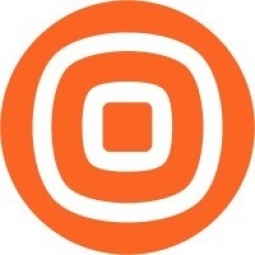Technology Category
- Platform as a Service (PaaS) - Application Development Platforms
Applicable Industries
- Retail
- Telecommunications
Use Cases
- Leasing Finance Automation
About The Customer
AppZone is a Nigerian fintech software provider established in 2008. It is recognized as one of Africa’s top fintech software companies. AppZone’s service offering focuses on providing retail and commercial banks with cloud-based software to run core operations like accounting, deposits, loans, and customer interactions. These solutions are used by 18 commercial banks and more than 450 microfinance banks across seven African countries. Together, these clients amass a yearly transaction value and loan disbursement of $2 billion and $300 million respectively.
The Challenge
AppZone, a leading Nigerian fintech software provider, was facing challenges with its transactional SMS and Unstructured Supplementary Service Data (USSD) platforms. The company provides these services to financial institutions across Africa for customer communication. However, until 2020, they relied on various solution providers in different markets, leading to mixed levels of success. The main issues were the lack of reliability and high support times and costs. AppZone needed to improve its reliability and reduce support times and costs for its platforms. The company aimed to achieve at least 98% uptime and required a provider that could offer local support at the country level.
The Solution
AppZone decided to implement Infobip's USSD and SMS solutions, given their reputable brand and extensive work with over 350 banks and financial institutions in the region. These solutions enabled AppZone to onboard microfinance banks securely and more efficiently. SMS allowed AppZone customers to offer transactional services, including delivering OTPs, account balances, and other financial notifications, quickly and effectively. USSD was utilized to check account balances and top-up airtime. Importantly, neither SMS nor USSD required internet connectivity, ensuring services remained accessible regardless of mobile device capabilities. The implementation of these solutions took about two weeks.
Operational Impact
Quantitative Benefit

Case Study missing?
Start adding your own!
Register with your work email and create a new case study profile for your business.
Related Case Studies.

Case Study
Improving Production Line Efficiency with Ethernet Micro RTU Controller
Moxa was asked to provide a connectivity solution for one of the world's leading cosmetics companies. This multinational corporation, with retail presence in 130 countries, 23 global braches, and over 66,000 employees, sought to improve the efficiency of their production process by migrating from manual monitoring to an automatic productivity monitoring system. The production line was being monitored by ABB Real-TPI, a factory information system that offers data collection and analysis to improve plant efficiency. Due to software limitations, the customer needed an OPC server and a corresponding I/O solution to collect data from additional sensor devices for the Real-TPI system. The goal is to enable the factory information system to more thoroughly collect data from every corner of the production line. This will improve its ability to measure Overall Equipment Effectiveness (OEE) and translate into increased production efficiencies. System Requirements • Instant status updates while still consuming minimal bandwidth to relieve strain on limited factory networks • Interoperable with ABB Real-TPI • Small form factor appropriate for deployment where space is scarce • Remote software management and configuration to simplify operations

Case Study
Digital Retail Security Solutions
Sennco wanted to help its retail customers increase sales and profits by developing an innovative alarm system as opposed to conventional connected alarms that are permanently tethered to display products. These traditional security systems were cumbersome and intrusive to the customer shopping experience. Additionally, they provided no useful data or analytics.

Case Study
How Sirqul’s IoT Platform is Crafting Carrefour’s New In-Store Experiences
Carrefour Taiwan’s goal is to be completely digital by end of 2018. Out-dated manual methods for analysis and assumptions limited Carrefour’s ability to change the customer experience and were void of real-time decision-making capabilities. Rather than relying solely on sales data, assumptions, and disparate systems, Carrefour Taiwan’s CEO led an initiative to find a connected IoT solution that could give the team the ability to make real-time changes and more informed decisions. Prior to implementing, Carrefour struggled to address their conversion rates and did not have the proper insights into the customer decision-making process nor how to make an immediate impact without losing customer confidence.

Case Study
Vodafone Hosted On AWS
Vodafone found that traffic for the applications peak during the four-month period when the international cricket season is at its height in Australia. During the 2011/2012 cricket season, 700,000 consumers downloaded the Cricket Live Australia application. Vodafone needed to be able to meet customer demand, but didn’t want to invest in additional resources that would be underutilized during cricket’s off-season.









